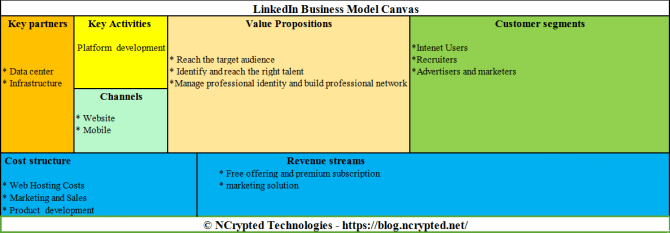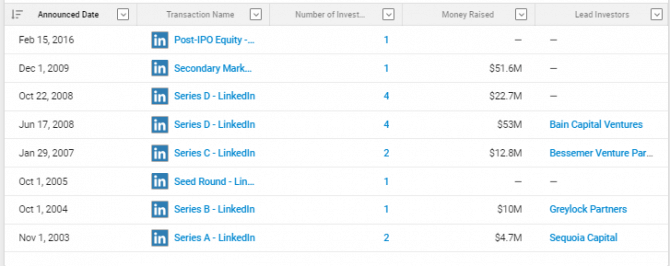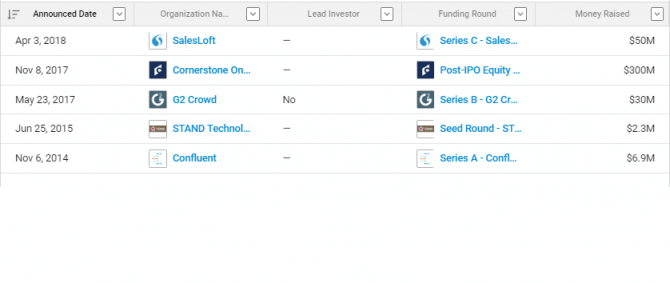Ever wondered how a platform as expansive as LinkedIn sustains itself while providing a plethora of services to its users? Delving into LinkedIn business model unveils the intricate web of revenue streams that power this professional networking giant. Let’s understand.
In today’s interconnected world, professional networking has become more critical than ever. Enter LinkedIn, the powerhouse platform revolutionizing how professionals connect, collaborate, and thrive in their respective industries.
With over millions of users spanning the globe, LinkedIn has become the go-to destination for professionals seeking opportunities, building networks, and staying abreast of industry trends. Understanding the essence of LinkedIn goes beyond mere user engagement; it’s about unlocking the doors to professional growth, networking, and career advancement.
From premium subscriptions to advertising and talent solutions, LinkedIn has strategically crafted a diverse portfolio of revenue-generating avenues. Understanding the nuances of LinkedIn’s business model not only sheds light on its financial operations but also offers insights into its sustainability, growth trajectory, and impact on the professional landscape.
Read more about what is LinkedIn and how it works in a separate article by our team. This article covers the business model canvas of LinkedIn, its revenue generation strategies, and how it makes money.
So, let’s embark on a journey to uncover the inner workings of LinkedIn’s revenue-generating mechanisms and explore how this platform turns connections into currency.
LinkedIn Business Model
Understanding the Engine Behind the Professional Networking Giant
Welcome, curious minds, to an exploration of LinkedIn’s business model – the driving force behind one of the world’s largest professional networking platforms. In this article, we’re unraveling the intricacies of how LinkedIn operates, generates revenue, and sustains its ecosystem while providing value to millions of users worldwide. So buckle up and let’s dive into the fascinating world of LinkedIn’s business model.
Freemium Model:
At the core of LinkedIn’s business model lies the freemium approach, offering basic features and services for free while charging for premium offerings. Users can create profiles, connect with others, and access basic networking features without cost. However, LinkedIn monetizes its platform through premium subscriptions, advertising, and talent solutions for businesses.
Read more about freemium business model.
LinkedIn Premium Subscriptions:
LinkedIn offers a range of premium subscription plans tailored to different user segments, including job seekers, recruiters, and sales professionals. These subscriptions provide access to advanced features such as InMail credits, advanced search filters, and enhanced profile visibility. LinkedIn generates revenue through subscription fees from users who opt for these premium offerings.
Read more about how the subscription business model works as a general revenue generation strategy.
Talent Solutions:
LinkedIn’s Talent Solutions segment caters to businesses and recruiters seeking to find, attract, and hire top talent. This includes tools for talent acquisition, employer branding, recruitment advertising, and applicant tracking. Companies pay subscription fees or use a pay-per-use model to access these services, generating a significant portion of LinkedIn’s revenue.
Marketing Solutions:
LinkedIn offers marketing solutions for businesses looking to reach and engage with professionals on the platform. This includes sponsored content, sponsored InMail, display ads, and dynamic ads. Advertisers pay based on impressions, clicks, or actions, providing another revenue stream for LinkedIn while helping businesses promote their products and services to a targeted audience.
Learning Solutions:
LinkedIn Learning, formerly known as Lynda.com, offers a vast library of online courses and tutorials covering a wide range of topics, from technical skills to business management and personal development. Users can access these courses through individual subscriptions or as part of LinkedIn Premium memberships. LinkedIn generates revenue from subscription fees paid by individual users or organizations.
Read more: how EdTech business model works.
Data Insights and Analytics:
LinkedIn also monetizes its vast trove of user data by offering insights and analytics to businesses, recruiters, and marketers. This includes demographic data, job market trends, talent insights, and company data. Businesses can access this data to inform their recruitment strategies, market research, and decision-making processes, providing an additional revenue stream for LinkedIn.
Partnerships and Acquisitions:
LinkedIn has forged strategic partnerships and made strategic acquisitions to further diversify its revenue streams and expand its offerings. This includes partnerships with other technology companies, integration with third-party tools and services, and acquisitions of companies that complement its core business.
LinkedIn’s business model is a multifaceted ecosystem that leverages a combination of freemium offerings, premium subscriptions, advertising, talent solutions, learning solutions, data insights, and strategic partnerships to drive revenue and sustain its platform. By providing value to users, businesses, and recruiters alike, LinkedIn has established itself as a powerhouse in the professional networking space while creating a sustainable business model that fuels its continued growth and success.
LinkedIn Business Model Canvas

Customer Segments
There are a total of three segments of the LinkedIn business model. The first segment includes internet users who go to the site and create a profile on it.
The second one includes recruiters who are looking for talent and want to recruit them.
Third – one includes advertisers who want to reach their target audience.
Value Proposition
LinkedIn enables normal internet users to utilize their professional skills and talent. It allows them to network and build relationships. This whole process is free of charge.
For recruiters, LinkedIn provides an attractive tool to find and identify great talents. It provides CVs with references and a wealth of information which is not usually available in standard CVs. All the CVs’ are structured and easily sortable. Through this recruiter can find and identify great talent with less effort.
In the case of advertisers, they can choose their target audience and can reach them.
Key Activities
Key activities for LinkedIn include platform development, it can be measured by a number of active users on LinkedIn. So it requires a platform that increases the number of active users and it keeps them engaged and active on the site. Everything else is less important as it only needs to keep raising the value bar to maintain its reputation.
Key Partners
Major key partners include data centers and infrastructure which keeps the platform online.
Channels
Main Channels through which people reach LinkedIn are its website and mobile app.
Customer Relationship
LinkedIn enables users to build a profile and connect in an online social network site, members can invite anyone to become a connection.
Revenue Streams
Free offerings as well as premium subscriptions are available for those who want to use advanced services.
Advertisers pay when the advertise clicked by the users(Pay per click or cost per click).
Some elements like Inmail are also chargeable.
Users can learn various skills through Lynda(LinkedIn learning platform).
Cost Structure
The main cost is the web hosting cost to keep the platform online. Other major costs incurred for product development and to increase the product value.
Marketing and sales as well as the general cost can also be included in the cost structure.
How LinkedIn Makes Money?
How LinkedIn Generates Revenue and Sustains its Ecosystem
Ever wondered how LinkedIn, the go-to platform for professional networking, actually makes money? Now, we’re pulling back the curtain to reveal the inner workings of LinkedIn’s revenue-generating mechanisms. From premium subscriptions to advertising and talent solutions, let’s explore the diverse avenues through which LinkedIn generates revenue and sustains its thriving ecosystem.
Premium Subscriptions:
LinkedIn offers a range of premium subscription plans tailored to different user segments, including job seekers, recruiters, and sales professionals. These subscriptions unlock advanced features such as InMail credits, advanced search filters, and enhanced profile visibility. Users pay monthly or annual subscription fees to access these premium offerings, providing a steady stream of revenue for LinkedIn.
Talent Solutions:
LinkedIn’s Talent Solutions segment caters to businesses and recruiters seeking to find, attract, and hire top talent. This includes tools for talent acquisition, employer branding, recruitment advertising, and applicant tracking. Companies pay subscription fees or use a pay-per-use model to access these services, generating a significant portion of LinkedIn’s revenue.
Marketing Solutions:
LinkedIn offers marketing solutions for businesses looking to reach and engage with professionals on the platform. This includes sponsored content, sponsored InMail, display ads, and dynamic ads. Advertisers pay based on impressions, clicks, or actions, providing another substantial revenue stream for LinkedIn while helping businesses promote their products and services to a targeted audience.
Learning Solutions:
LinkedIn Learning, formerly known as Lynda.com, offers a vast library of online courses and tutorials covering various topics, from technical skills to business management and personal development. Users can access these courses through individual subscriptions or as part of LinkedIn Premium memberships. LinkedIn generates revenue from subscription fees paid by individual users or organizations.
Data Insights and Analytics:
LinkedIn monetizes its extensive user data by offering insights and analytics to businesses, recruiters, and marketers. This includes demographic data, job market trends, talent insights, and company data. Businesses can access this data to inform their recruitment strategies, market research, and decision-making processes, providing an additional revenue stream for LinkedIn.
Other Revenue Streams:
In addition to its core revenue streams, LinkedIn generates income through other channels such as partnerships, acquisitions, and sponsored events. Strategic partnerships with technology companies, integration with third-party tools and services, and acquisitions of complementary businesses further diversify LinkedIn’s revenue sources and fuel its growth.
LinkedIn’s revenue model is a multifaceted ecosystem that leverages premium subscriptions, advertising, talent solutions, learning solutions, data insights, and strategic partnerships to drive revenue and sustain its platform. By providing value to users, businesses, and recruiters alike, LinkedIn has built a sustainable business model that powers its continued growth and success in the professional networking space.
LinkedIn Funding Rounds
In 2014, Confluent has invested $6.9 M. G2 Crowd has raised it to $23M in May 2017.
In 2018, it reached up to $50M by SalesLoft as shown in fig1.2.


1.1


Fig 1.2


Fig 1.3
LinkedIn Revenue Model
Premium Subscriptions
LinkedIn is easy to operate and free to join but it empowers with limited features like – Filtered search options, no InMail credits, and filtered search credits, you may also know credits, who viewed your profile numbers.
Corporate Solutions
Corporates can utilize LinkedIn for advertising purposes:
- Contextual ads
- Sponsored post
- Menu bar ads
Recruiter Solutions
Corporates can utilize LinkedIn for these things
- Finding candidates
- Posting Jobs
LinkedIn makes nothing or alongside nothing from 99% of its individuals; the 22,000 corporate customers and around 500,000 premium enrollments make up over 75% of revenue income
There exists critical potential in the advertising business, however, increasing the advertisement income may rip apart other more beneficial territories of the business.
LinkedIn is an incredible example of a freemium business model; the greater part of the site and highlights are accessible for nothing out of pocket to all clients, with premium items accessible only to paying customers.
How does LinkedIn Make Money through Premium Features?
Business Solutions
LinkedIn can be used to grow your professional network. Every user has a different set of requirements like finding a new opportunity, searching for talented employees, marketing a specific product, searching for specific leads, etc. The LinkedIn Business Solution can fulfill most of the needs.
The LinkedIn Business solution is a collective name for all the premium services offered by LinkedIn. It includes-
Premium Subscription
Premium subscription enables a user to unlock certain features which are not available for users. It includes advanced facilities provided to premium users. The subscription includes
Career
A Premium Career subscription gives the user access to enhanced features and benefits when researching and applying for jobs.
Business Plus
Through this subscription users can find the target audience and connect with them, thus users can promote and grow their business.
Sales Navigator
Sales Navigator makes social selling easy through sales tools that focus on helping users to find the right prospects and build trusted relationships with them.
Recruiter Lite
Through this subscription, users can find and hire talented candidates faster.
Marketing Solutions
LinkedIn is not only a great recruitment platform, but also provides great marketing solutions to marketers.
LinkedIn marketing solution enables companies to create a company page. Companies can enhance their marketing efforts by creating sponsored content, sponsored InMails, and text advertisements.
Talent solutions
It is the most important service provided by LinkedIn. Through this service companies and recruiters can find talented employees as well as capable partners.
This service includes LinkedIn recruiter, job slots, recruitment media, career pages, and work with our ads.
Sales solutions
This solution can help a user grow his sales through various social selling strategies and tools like InMail, lead recommendations, saved leads..etc.
Recruitment Solutions
It is the lighter version of talent solutions, through this subscription users can get access to automatic candidate tracking, smart suggestions, integrated hiring..etc.
LinkedIn Acquisitions
LinkedIn provides an e-learning platform and slides hosting service through Lynda and SlideShare.
Through Lynda, users can learn creative skills, software, and technology through videos. Lynda is the most recent acquisition by LinkedIn.
SlideShare is a web 2.0-based slide hosting service, which enables the user to upload files in various formats like PowerPoint, open documents, or PDF. SlideShare services are free for every user.
Why is LinkedIn better?
LinkedIn has a clearer motive and great revenue model which is not dependent on only advertisements.LinkedIn provides a facility by which people can search for jobs and make their lives better.
LinkedIn has an upper hand over other social networking sites as time spent on this social network isn’t considered as time wasted by the users.
How to Start a Social networking site similar to LinkedIn?
After going through these interesting facts about LinkedIn if you also want to start a similar social networking platform then check out ConnectIn at an affordable price.

